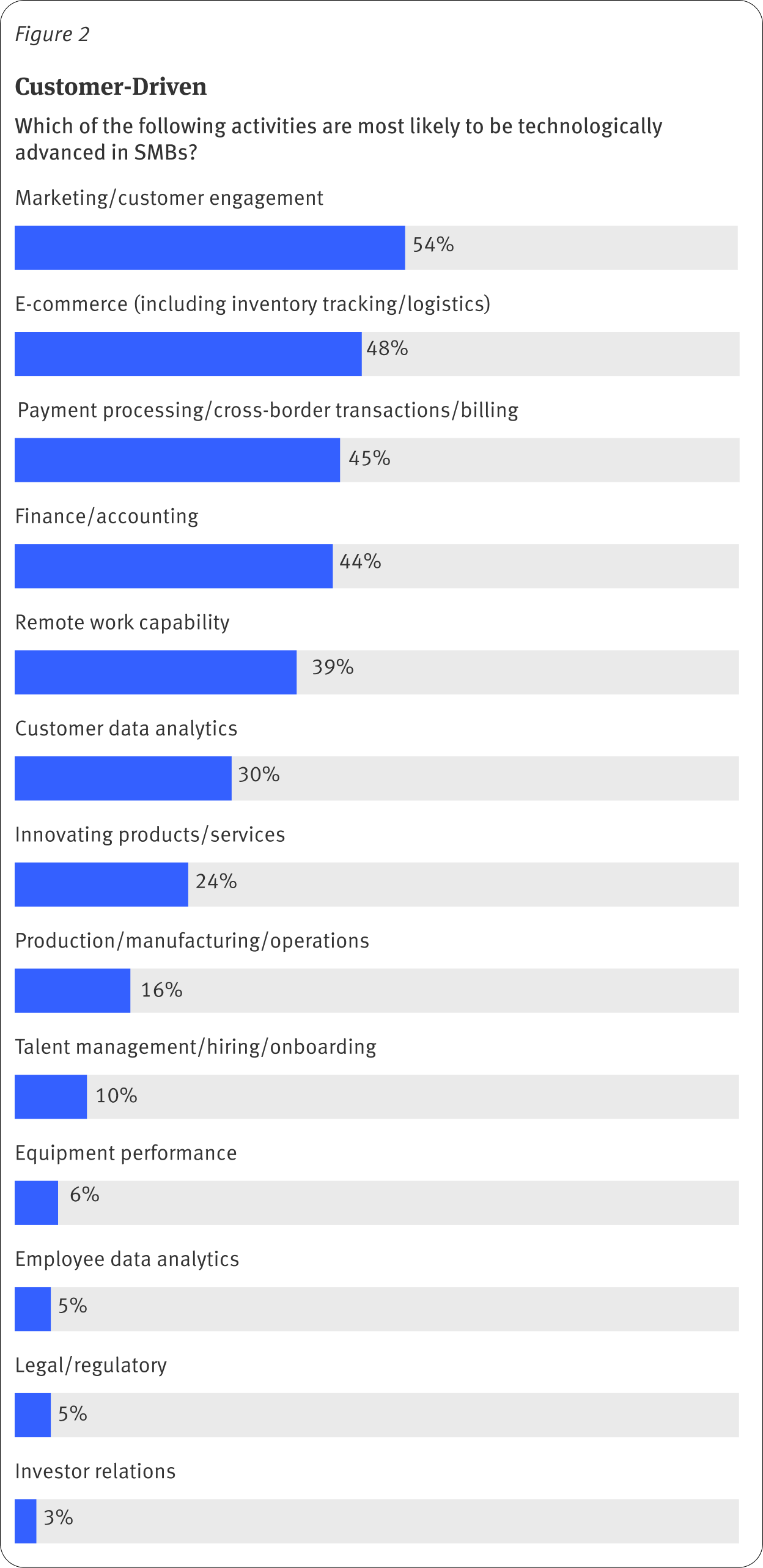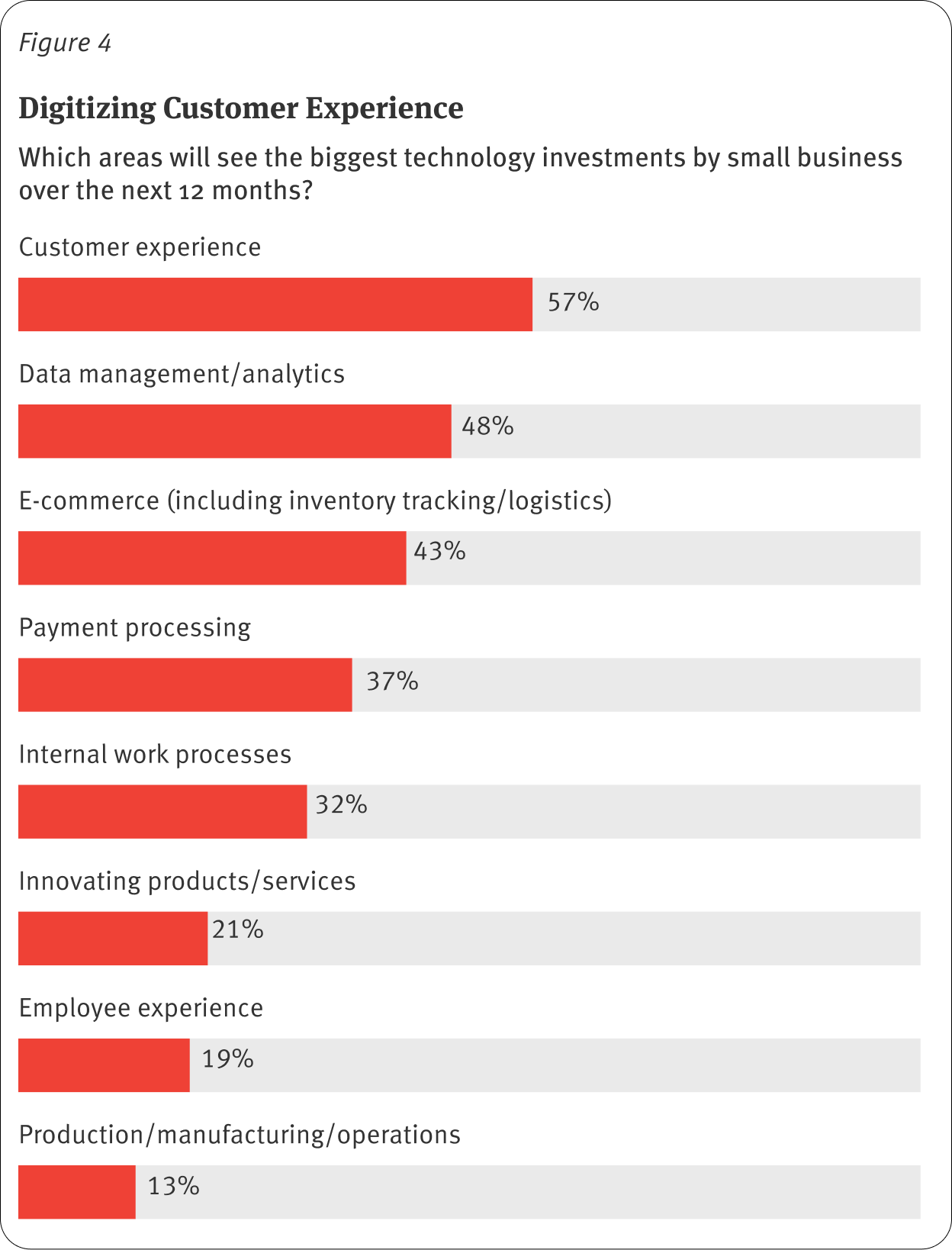Marketing is the top area that is most likely to be technologically advanced in a
small business. “Unless you are an established business relaying on the same loyal
customer base, you need to be discoverable and findable to exist. You can achieve
that by having the right presence on marketing platforms or search engines, either
organic or paid,” says Engelberg.
Creating the right presence means being represented on the relevant touchpoints,
where the customers are most likely to find the business. That means striking the
right balance between concentrating on one big social outlet such as Facebook versus
trying to cover too many touchpoints and wasting time and advertising dollars on
channels that will not yield any new business. Also important is to keep up with the
most recent privacy developments and their impact on marketing efforts as well as
changing social media preferences and trends among the relevant customer segments.
Small businesses that rely on their gut feeling about what their customers want or
where they are risk building their futures on wrong assumptions. Considering that SMB
budgets, if they exist, are on the small side, having the right customer data is key
to understanding how best to allocate the money. Surprisingly, competence at customer
data analytics, which is necessary for success at digital marketing, is significantly
lower in the ranking of the areas that small businesses are technologically advanced
at, with less than a third (30%) of The Information’s survey respondents believing
that competence is adequate.
The good news is that data analytics ranks much higher (second) as a technology that
SMBs should be prioritizing (67%), and that it is considered the most important
application that SMBs need (55%), which points to an understanding of the importance
of data-driven decision making. Marketing measurement is one area where Palace Law is
continuing to look for new technology solutions. The firm tracks how their customers
learnt about them and which advertising channels were decisive for the client’s
hiring decision.
“We are working to improve the strategic use of technology in our marketing systems to invest the marketing budget in the best way possible,” says Couch.

Payment software is the top technology that SMBs should have (68%). Payment software,
always crucial for the ability to close the deal, has been undergoing intense
innovation during the pandemic. This innovation includes contactless, cashier-less,
omni-channel and embedded payment solutions (e.g., Uber or Amazon Prime). The
adoption of digital payment methods has been spurred by customers who opted for
contactless payments during the pandemic.
Digital payments can have a big impact not only on closing customer transactions but
also on improving customer experience. For example, at Palace Law firm, improving the
payments experience for their clients involved creating an automatic email updating
system to let clients know when their settlement checks came in.
For Archie’s Reguero, making digital payments more efficient is a core business. He
considers payment processing part of the back-office operations that small businesses
need help with. Archie targets small businesses that rely on freelance work. Having a
technology solution to handle payments to contractors is cheaper than hiring people
to do that; also, being able to pay freelancers digitally and on time helps with
talent retention.
The Information’s survey rankings cast doubt on the ongoing discussion about how good
customer experience depends on good employee experience. The Information’s data shows
that SMBs are much more focused on technology relating to customers than to
employees. Just 5% believe that SMBs are likely to have technologically advanced
employee data analytics. Just 39% believe that remote working and collaboration are
technologically advanced. One bright data point for employee experience is that
project and task management tools are ranked as the most important technology
solution (55%). That means that SMBs recognize the importance of using technology to
create efficient work processes.
Employee experience has been gaining in importance in the era of The Great
Resignation, skills shortages and the ongoing kerfuffle about whether employees are
to return to the office or continue working mostly remotely. Further complicating the
talent landscape are high inflation, stock market volatility and fears of recession,
which are already causing some hiring freezes and layoffs, meaning that fewer people
will have to do more with less—an area ripe for technology solutions.
Employees at Palace Law can do much of their work from just about anywhere, being
able to access clients or draft and share documents on their mobile devices. Apart
from productivity, it improves the quality of life. For example, Couch has
participated in virtual court hearings with a judge while on his fishing boat.
What SMBs prioritize is as telling as what they don’t prioritize. The latter includes
maintenance and security. Eighty percent of survey respondents believe that SMBs tend
to underestimate the importance of cybersecurity, 73% that they underestimate the
need to upgrade software, and 56% that SMBs typically underestimate the need to
upgrade hardware.
In this lack of attention to security and upgrades, SMBs are akin to politicians, who
are more likely to focus on building new bridges than repairing crumbling
infrastructure. But just as old bridges and roads can lead to grave consequences,
inattention to cybersecurity and software upgrades leads to breaches and crashes. And
that has grave consequences for business, as it translates directly into loss of
customer trust, brand reputation and ultimately, revenue.









